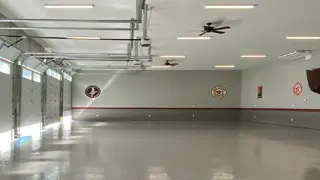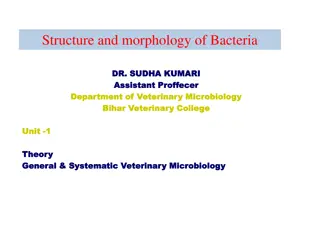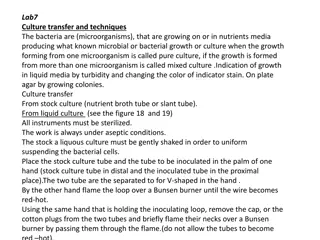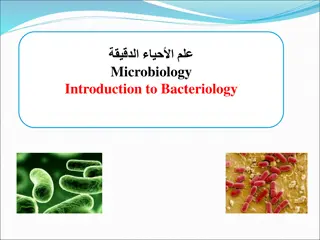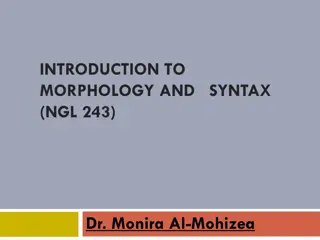Understanding Bacterial Morphology and Simple Stain Techniques
Explore the characteristics of bacteria based on their shape and structure, grouped into spherical, rod-shaped, and helical types. Learn about bacterial smear preparation principles and the simple stain procedure for observing bacterial cells under a microscope. Discover various bacterial species and their arrangements in different forms. Dive into the world of microbiology with Dr. Mayssaa Essam.
Download Presentation

Please find below an Image/Link to download the presentation.
The content on the website is provided AS IS for your information and personal use only. It may not be sold, licensed, or shared on other websites without obtaining consent from the author. Download presentation by click this link. If you encounter any issues during the download, it is possible that the publisher has removed the file from their server.
E N D
Presentation Transcript
Simple stain Dr. Mayssaa Essam
Bacterial Morphology Bacteria: are unicellular free living organisms without chlorophil having both DNA and RNA
Bacterial morphology Can be grouped into three types 3 Helical (spirilla) 1- Spherical (cocci) 2- Rod shaped (bacili)
1- Spherical ( cocci) : bacteria may occur single , in pairs , in tetrads , in chain and in irregular masses. Staphylococcus aureus (in clusters) Streptococcus pyogenes (in chain) Streptococcus pneumoniae (in pairs)
2- Rod shaped(bacilli): bacteria may vary in length may have square , round , or pointed end and may be motile or non-motile Escherichia coli Bacillus subtilis 3- Helical and curved bacteria : exited as slender spirochaetes , spirillum and bent rods (vibrios).
Smear preparation and simple stain Smear prepation Principles A bacterial smear is a dried preparation of bacterial cells on a glass slide. In bacterial smear that has been properly processed : 1- The bacteria are evenly spread out on the slide in such a concentration that , they are adequately separated from on another. 2- The bacteria are not washed off the slide during staining. 3- Bacterial form is not distorted.
Procedure: In making a smear the bacteria from either a broth culture or an agar slant or plate my be used . If a slant or plate is used , a small mount of bacterial growth is transferred to a drop of water on a glass slide and mixed , and the mixture is spread out evenly over a large area on the slide . If the medium is liquid , place one or two loops of the medium directly on the slide and spread the bacteria over a large area. Allow the slide to air dry at room temperature. The next step is to attach the bacteria to the slide by heat fixing . This is accomplished by gentle heating , passing the slide several time through the hot portion of flame of a Bunsen burner . Most bacteria can be fixed to the slide and killed in this way without serious distortion of cell structure.
Simple stain Principles Simple staining is carried out to visualize bacteria and to compare morphological shapes and arrangements of bacterial cells. In simple stain , the bacterial smear is stained with single basic dye . Bacterial cell surface is slightly negative so it tends to bind strongly to the cationic chromogen??? of basic dyes. Commonly used dyes for simple staining are : Crystal violet (20-30 sec. staining time). Methylene blue (60 sec. staining time). Carbolfuchsin (5-10 sec. staining time).



